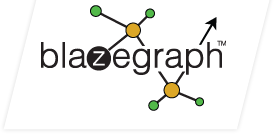
WebObjects is a discontinued Java web application server and a server-based web application framework originally developed by NeXT Software, Inc.
A query language, also known as data query language or database query language (DQL), is a computer language used to make queries in databases and information systems. In database systems, query languages rely on strict theory to retrieve information. A well known example is the Structured Query Language (SQL).
SPARQL is an RDF query language—that is, a semantic query language for databases—able to retrieve and manipulate data stored in Resource Description Framework (RDF) format. It was made a standard by the RDF Data Access Working Group (DAWG) of the World Wide Web Consortium, and is recognized as one of the key technologies of the semantic web. On 15 January 2008, SPARQL 1.0 was acknowledged by W3C as an official recommendation, and SPARQL 1.1 in March, 2013.

RDFLib is a Python library for working with RDF, a simple yet powerful language for representing information. This library contains parsers/serializers for almost all of the known RDF serializations, such as RDF/XML, Turtle, N-Triples, & JSON-LD, many of which are now supported in their updated form. The library also contains both in-memory and persistent Graph back-ends for storing RDF information and numerous convenience functions for declaring graph namespaces, lodging SPARQL queries and so on. It is in continuous development with the most recent stable release, rdflib 6.1.1 having been released on 20 December 2021. It was originally created by Daniel Krech with the first release in November, 2002.
Oracle Spatial and Graph, formerly Oracle Spatial, is a free option component of the Oracle Database. The spatial features in Oracle Spatial and Graph aid users in managing geographic and location-data in a native type within an Oracle database, potentially supporting a wide range of applications — from automated mapping, facilities management, and geographic information systems (AM/FM/GIS), to wireless location services and location-enabled e-business. The graph features in Oracle Spatial and Graph include Oracle Network Data Model (NDM) graphs used in traditional network applications in major transportation, telcos, utilities and energy organizations and RDF semantic graphs used in social networks and social interactions and in linking disparate data sets to address requirements from the research, health sciences, finance, media and intelligence communities.
In computing, Terse RDF Triple Language (Turtle) is a syntax and file format for expressing data in the Resource Description Framework (RDF) data model. Turtle syntax is similar to that of SPARQL, an RDF query language. It is a common data format for storing RDF data, along with N-Triples, JSON-LD and RDF/XML.
Redland is a set of free software libraries written in C that provide support for the Resource Description Framework (RDF), created by Dave Beckett.
Ontotext is a software company that produces software relating to data management. Its main products are GraphDB, an RDF database; and Ontotext Platform, a general data management platform based on knowledge graphs. It was founded in 2000 in Bulgaria, and now has offices internationally. Together with the BBC, Ontotext developed one of the early large-scale industrial semantic applications, Dynamic Semantic Publishing, starting in 2010.

Apache Jena is an open source Semantic Web framework for Java. It provides an API to extract data from and write to RDF graphs. The graphs are represented as an abstract "model". A model can be sourced with data from files, databases, URLs or a combination of these. A model can also be queried through SPARQL 1.1.
Mulgara is a triplestore and fork of the original Kowari project. It is open-source, scalable, and transaction-safe. Mulgara instances can be queried via the iTQL query language and the SPARQL query language.
A triplestore or RDF store is a purpose-built database for the storage and retrieval of triples through semantic queries. A triple is a data entity composed of subject–predicate–object, like "Bob is 35" or "Bob knows Fred".
AllegroGraph is a closed source triplestore which is designed to store RDF triples, a standard format for Linked Data. It also operates as a document store designed for storing, retrieving and managing document-oriented information, in JSON-LD format. AllegroGraph is currently in use in commercial projects and a US Department of Defense project. It is also the storage component for the TwitLogic project that is bringing the Semantic Web to Twitter data.

Sones GraphDB was a graph database developed by the German company sones GmbH, available from 2010 to 2012. Its last version was released in May 2011. sones GmbH, which was based in Erfurt and Leipzig, was declared bankrupt on January 1, 2012.
GeoSPARQL is a model for representing and querying geospatial linked data for the Semantic Web. It is standardized by the Open Geospatial Consortium as OGC GeoSPARQL. The definition of a small ontology based on well-understood OGC standards is intended to provide a standardized exchange basis for geospatial RDF data which can support both qualitative and quantitative spatial reasoning and querying with the SPARQL database query language.
The Open Semantic Framework (OSF) is an integrated software stack using semantic technologies for knowledge management. It has a layered architecture that combines existing open source software with additional open source components developed specifically to provide a complete Web application framework. OSF is made available under the Apache 2 license.
Shapes Constraint Language (SHACL) is a World Wide Web Consortium (W3C) standard language for describing Resource Description Framework (RDF) graphs. SHACL has been designed to enhance the semantic and technical interoperability layers of ontologies expressed as RDF graphs.

Blazegraph is an open source triplestore and graph database, written in Java. It has been abandoned since 2020 and is known to be used in production by WMDE for the Wikidata SPARQL endpoint. It is licensed under the GNU GPL.
QLever is an open-source triplestore and graph database developed by a team at the University of Freiburg led by Hannah Bast. QLever performs high-performance queries of semantic Web knowledge bases, including full-text search within text corpuses. A specialized user interface for QLever predictively autocompletes SPARQL queries.






